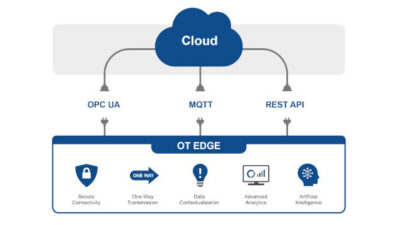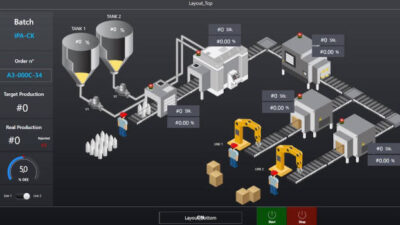Henning Kagermann, chairman and CEO, SAP, says by moving users to service-oriented architecture in two ways, SAP is ensuring its continuing relevance within the software industry.
By introducing SAP Business ByDesign—a service-oriented architecture (SOA)-based, on-demand enterprise system for midsize companies—and selling it through indirect sales channels, SAP , the world’s leading ERP vendor, says it’s “singing from the same hymn sheet” as its customers.“We are innovators too,” said Henning Kagermann, CEO and chairman, at the SAP Influencers Summit recently held in Boston, “by introducing the disruptive business model of ByDesign even as we introduce in parallel‘SOA by evolution’ for SAP Business Suite, the market leader. Those in the investment community have said that no one else has ever done this before.”The benefits, for itself and its customers, of developing, implementing, extending, and maintaining enterprise systems based on SOA—even as it protects customers’ prior investments and its own market position—and culminating in something called “business network transformation,” was the theme of the event.For one, Kagermann said, SAP’s disciplined approach to SOA allows “the industrialization of software development and deployment,” with highlights including the following:•execute in-house and which ones are outsourced. ••Other topics addressed at the summit included the progress of SAP NetWeaver, its middleware product central to SOA success; and the future of its “business user” development efforts in light of the recent Business Objects acquisition. Industrializing software By introducing Business ByDesign and moving to a platform-based approach across product lines centered on use of NetWeaver, SAP is seeking to avoid being over taken by a nimbler competitor. Distribution models But while exuding confidence in its technology, SAP executives admitted to still feeling their way when it comes to the more intractable problem of eliminating the high cost of direct sales efforts.Vendors do obviously already sell enterprise software to small and midsize companies through indirect sales channels, but SAP claims no one has ever sold “on-demand” enterprise software that way. In setting up this sales channel, which today has 22 partners and will eventually have somewhere around 1,000, it’s proceeding methodically.Of the ByDesign indirect sales channel, Kagermann said, “We really aren’t looking for consultants or systems integrators at this point. It’s very important we manage this ecosystem well. We don’t want to partner with ByDesign to the point where it drives up costs.”The man more directly responsible for assembling that ecosystem, Hans-Peter Klaey, president SME, SAP, said, “We want partners of volume, not volumes of partners. The ByDesign sales model is different because it’s an on-demand solution. Therefore, the partners currently are “shadowing” SAP in its efforts, before taking over as the way becomes increasingly clear.”As for business users, Doug Merritt an SAP corporate officer and head of business user development, said, “It’s easier to say what this business user group is not, than what it is, but basically managed within this group are all the applications involving tacit or non-repetitive dealings within networks and communities.”The two clusters within the group, said Merritt, are:••“There is an open space here, different from the transactional world, where an on-demand application, with workflow and visualization, for business intelligence or otherwise, has considerable value.”The applications that come with the Business Objects acquisition are grouped here. Because its much-vaunted toolset works cross-platform, Business Objects will be run as a separate division, but with the transaction not yet closed, much remains to be decided or disclosed here.Final wordsBy furnishing two routes to SOA, via traditional applications and “on demand,” SAP is keeping its bases covered. While it appears the SaaS model may soon be the dominant way of delivering applications, how that transition takes is less clear.At least that’s the view of veteran ERP market watcher, AMR Research VP Bruce Richardson, who believes the Business ByDesign model will eventually be embraced by companies of all sizes.In a recent column on the AMR Web site, Richardson notes that SAP Business Suite and Business ByDesign already share the NetWeaver platform and other infrastructure elements. In five years time, asks Richardson, will the move by large enterprises to on-demand be evolutionary or revolutionary?Finally, Peter Graf, EVP, marketing, SAP, pointed out at the SAP Influencers Summit “what users are really interested in is competing through innovation.” Once the SOA business transformation is complete, he added, we’ll see business processes for what they really are, and move away from all these misleading three-letter acronyms.



